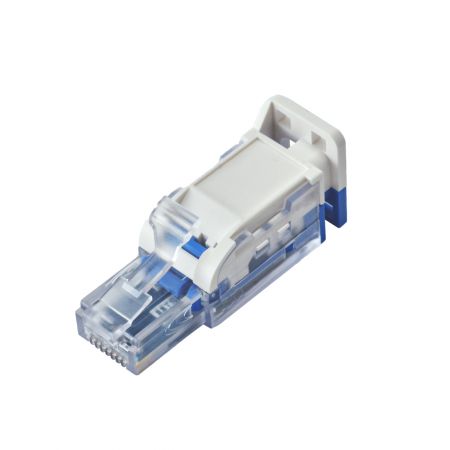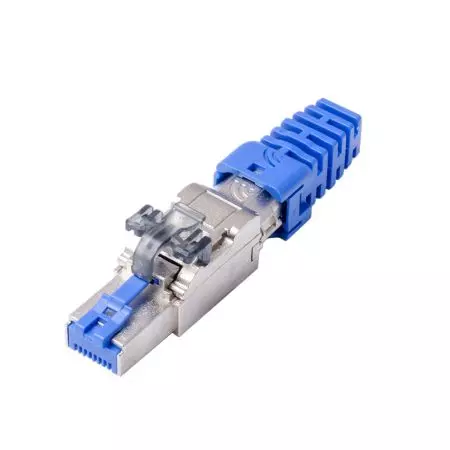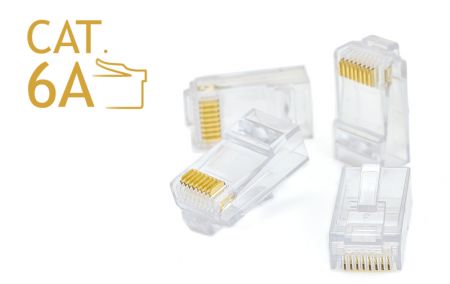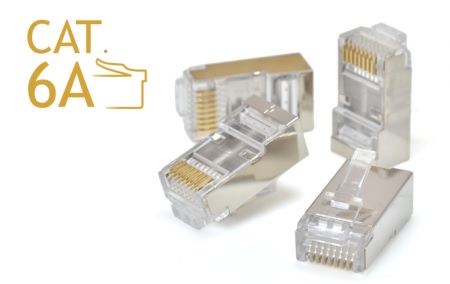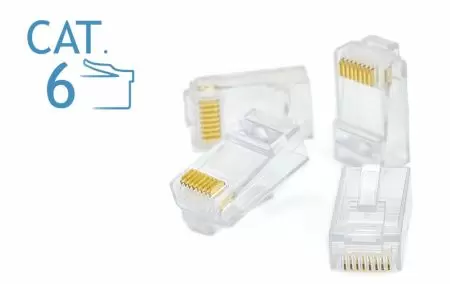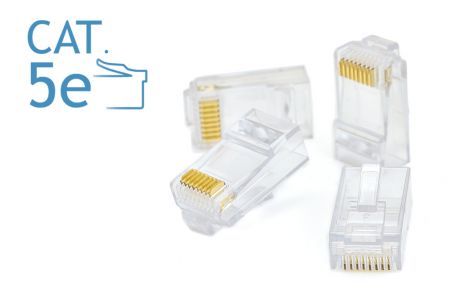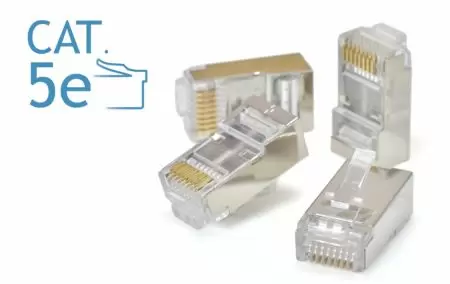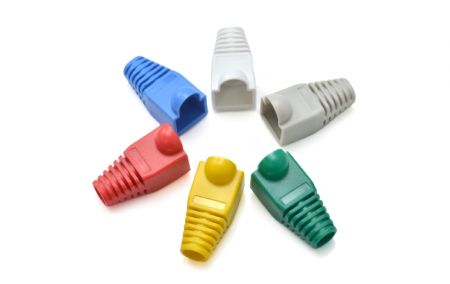Modular Plugs
C5e / C6 / C6A
Network mating interface RJ-45 Modular Plug has a long history with Telecom Legacy. Transmission speeds increase as network technology advances, and bandwidth requirements also grow.
Modular Plug plays an important role in copper cabling. The Telecom legacy is the basis for the network evolution, meaning some disadvantages are inherent. For the concerns of compatibility with the existing telecom system, central pins 4 and 5 are preoccupied. Combinations of pins 1.2 and 7.8 can still maintain good impedance, but pin 3.6 cannot avoid twisted pair splits. As a result, Pair 3 (Pin 3.6) becomes the most impedance mismatched pair and picks up unwanted signals from the other pairs, especially Pair 1 (Pin 5.4).
RJ-45 Modular Plugs are known for their inherent disadvantages, but the workmanship in terminating the twisted pairs also determines whether you will have an acceptable Category Compliant patch cord.
You may say perhaps the weakest link in the whole network cabling is the patch cord, the weakest connection within the patch cord is the modular plug.
It makes a lot of sense to choose well-designed RJ-45 Modular Plugs to complete the cabling channel. Here are a few tips for selecting a good one:
1. Gold-Plating
Always choose 50u” gold plated. Gold is said to be one of the best conductors of electricity and 50u” gold plating gives you excellent durability that tolerates at least 1000 times mating cycles.
2. Suitable Insulated Conductor Size
To achieve acceptable signal strength up to 100 meters of cabling, the conductor size and insulation diameter grow larger and larger. Patch cords are usually purchased from the assembly houses with custom-made color-coded and specific lengths. These patch cords are using “stranded cables”. Assembly houses choose the specific modular plug that is suitable for mass production in advance so “Suitable Insulated Conductor Size” is never an issue for them. However, it's a different situation at installation sites and DIY marketplaces. People would assemble patch cords out of unused horizontal cable or whatever they could purchase from wholesalers or resellers. If that’s the case, the diameter of the insulated conductor for Cat 6 or Cat 6A is typically 1.1 to 1.2 mm, and it can be 1.4 to 1.5mm for PE-foam insulated conductor (S/FTP). Although you might not be aware of such slight variations, the plug's interior hole size does vary. Please take time to look up the cable adaptability while planning.
3. Efficiency of Plug Assembly
Plug assembly can be time-consuming and require great skills. The conventional assembly process involves aligning the wires, trimming them flush, and inserting the wires until they reach the plug's end wall… Everything seems perfect, but in practice, the wires get kinked or slack.
A pass-through connector may be quite helpful since it gives you the option to thread the wires through the end wall and then cut them. It significantly improves work efficiency.
4. Transmission Concern
Multi-piece plugs generally yield a higher “Patch Cord Limit Compliant” yield rate.
While with a single-piece plug you can only rely on a lot of practice, an auxiliary like “load bar” and “guide” helps you to easily separate each pair to its designated position and maintain a decent twist ratio.

